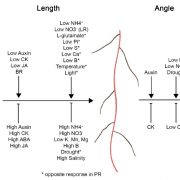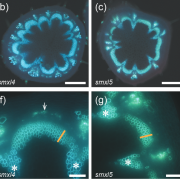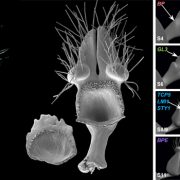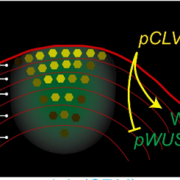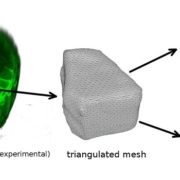Tissue-specific interference reveals complex roles for auxin signalling in procambial cells during graft healing in Arabidopsis
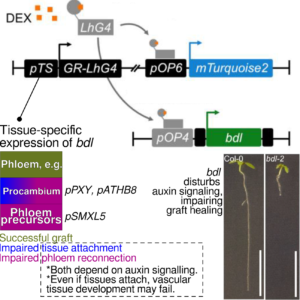 For hundreds of years, we have propagated plants clonally by grafting, i.e. the union of a scion and a rootstock to form a new plant. To be successful, a graft junction must heal: tissues must attach, and vascular bundles reconnect, in a process known to involve auxin. Here, Serivichyasw at et al. investigate the role of auxin signalling in different tissues during graft healing in Arabidopsis thaliana. The authors developed a platform for disturbing auxin signalling in an inducible, tissue-specific manner using promoter sequences of genes with cell type-specific expression patterns driving bdl, a nonfunctional BODENLOS/IAA12 allele that disturbs auxin signalling. Among the tested tissues, lines with procambium- and phloem precursor-localised expression of bdl saw the strongest losses in graft healing. Procambial cells expressing bdl caused failure of tissue attachment and phloem reconnection in grafts, much like what is seen for bdl-2 loss-of-function mutant lines. Although tissue attachment was successful in phloem precursor-specific bdl expression lines, phloem development in these grafts was impaired, suggesting the two processes are somewhat independent. Disturbing auxin signalling in the procambium also affected the critical callus formation stage of graft healing. Along with new insights into the biology of grafting, the expression platform developed herein could be used to better spatially resolve the role of auxin in other plant developmental processes. (Summary by John Vilasboa @vilasjohn) Plant Physiol. 10.1093/plphys/kiae257
For hundreds of years, we have propagated plants clonally by grafting, i.e. the union of a scion and a rootstock to form a new plant. To be successful, a graft junction must heal: tissues must attach, and vascular bundles reconnect, in a process known to involve auxin. Here, Serivichyasw at et al. investigate the role of auxin signalling in different tissues during graft healing in Arabidopsis thaliana. The authors developed a platform for disturbing auxin signalling in an inducible, tissue-specific manner using promoter sequences of genes with cell type-specific expression patterns driving bdl, a nonfunctional BODENLOS/IAA12 allele that disturbs auxin signalling. Among the tested tissues, lines with procambium- and phloem precursor-localised expression of bdl saw the strongest losses in graft healing. Procambial cells expressing bdl caused failure of tissue attachment and phloem reconnection in grafts, much like what is seen for bdl-2 loss-of-function mutant lines. Although tissue attachment was successful in phloem precursor-specific bdl expression lines, phloem development in these grafts was impaired, suggesting the two processes are somewhat independent. Disturbing auxin signalling in the procambium also affected the critical callus formation stage of graft healing. Along with new insights into the biology of grafting, the expression platform developed herein could be used to better spatially resolve the role of auxin in other plant developmental processes. (Summary by John Vilasboa @vilasjohn) Plant Physiol. 10.1093/plphys/kiae257


